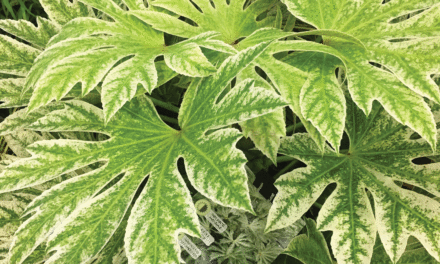Simply gourd-geous!
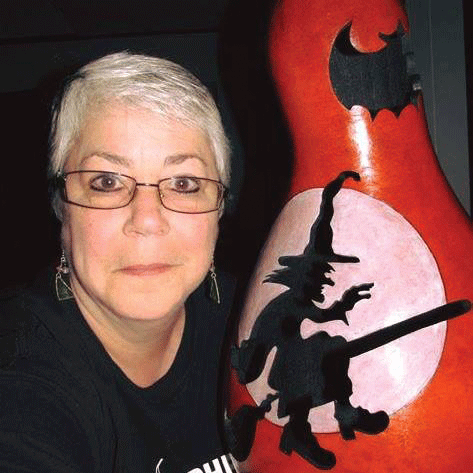
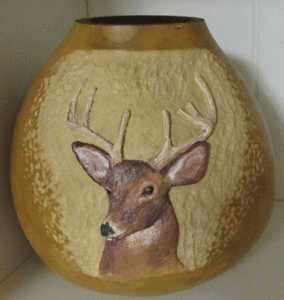
Susan Zanella said she would like to see a push towards gourd craft being viewed as a form of fine art rather than as a commodity.
Gourds are a staple in the fall, whether they’re used in recipes or as decorations.
Pumpkin carving, roasted squash and more—come fall, the cornucopia is full of them.
But what many people don’t realize is that when dried out, gourds can be used as an art medium as well. Susan Zanella of the Gourd Market in Baldwin, Md. has been creating gourd art for more than 10 years. She is part of a worldwide organization, The American Gourd Society, and said that gourd art has been around in America since the 1970s and has even been traced back to Ancient Egyptian tombs.
“There’s absolutely nothing you cannot do with a gourd,” said Zanella.
She said a dried gourd is technically a soft wood; anything you can do with wood, you can do with a gourd.
The only difference, she said, is that gourds come in an inflexible shape which can’t really be changed or manipulated, but that just calls for more creativity.
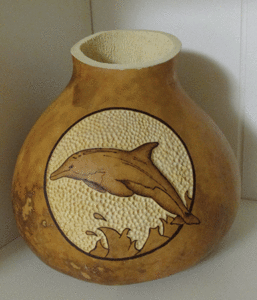 Susan creates, sells and displays her gourd art.
Susan creates, sells and displays her gourd art.
Birdhouses are the most common and popular use for dried gourds, she said, but she makes bowls, vases, Christmas
ornaments and sometimes, even three-dimensional puzzles.
She also said gourd luminaries are becoming increasingly popular.
However, Zanella said she would like to see a push towards gourd craft being viewed as a form of fine art rather than as a commodity.
“One of the biggest questions I get asked is ‘what do you use it for?’ Well, what do you do with a painting?” said Zanella.
People tend to see it as a craft more than an art, she said, and expect it to be functional or to serve a purpose.
Zanella said her go-to methods for gourd art are three-dimensional carving and pyrography, or wood burning. She likes to trick the viewer, she said.
For example when she does a carving, it appears as though a gure is glued on top of the gourd when it’s actually carved right into the surface of the gourd.
Zanella doesn’t grow her own gourds, but gets them from the Amish community in Lancaster, Pa., where there are several gourd-specific farms.
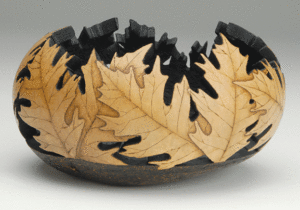
Susan Tanella creates, sells and displays gourd art. Birdhouses are the most common and popular use for dried gourds, she said, but she makes bowls, vases. Christmas ornaments and three-dimensional puzzles.
She said the proper way to dry out a gourd for use is to let it die on the vine, then pick it off.
She said the gourd will get moldy and black and after it’s fully dry, an artist would scrub that mold off.
Zanella said gourd farms usually plant in April and then pull the gourds off the vine around November.
She said some farmers even leave the gourds on the vine through the winter and pick them in the spring to ensure that they’re fully dry and ready for use.
Cleaning out the gourd is part of the process of creating her art, Zanella said.
She compared it to scooping the guts from a pumpkin, except that the guts are dry fibers.
Since gourds are akin to wood, she uses woodworking tools to cut them open, usually in a shape that she can later fit back together, such as a lid.
The fibrous materials inside are full of mold spores and dangerous to breathe, Zanella said, so she said she wears a respirator or dust mask when cleaning out dried gourd.
After the gourd is finished, Zanella colors the outside with leather dye or transparent ink and a sealant.
“I love gourds as a medium for my art and love sharing my passion,” she said.
For such a rigid and shape-specific medium, there’s a lot you can do with gourds.
Whether you paint them, carve them, burn patterns into them or simply just cook them, your fall speed won’t be be complete without gourds.


